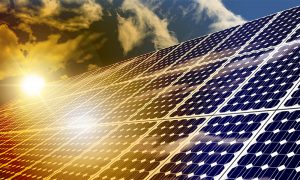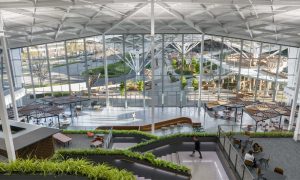Solar aids crude oil recovery
GlassPoint promises to decrease the region’s EOR gas utilisation

GlassPoint’s pilot project in southern Oman with Petroleum Development Oman (PDO) has been operating successfully since late 2012. The system, which generates an average of 50 tonnes of steam daily, is an operational baseline for large-scale projects in Oman and throughout the region.
Rod MacGregor, President & CEO of GlassPoint, says: “Looking beyond the benefits of the cash infusion, what makes this round special is the support from the government of Oman through SGRF and from Shell, a leader in the EOR field. In my opinion, the strategic focus and value we get from their participation is more important than the dollars.”
In fact, Oman was the first Gulf country to implement EOR, after its oil production peaked in 2000. Oman successfully used EOR to arrest the decline in production and restore it to 2000 levels. Recently, Kuwait announced that it would begin significant EOR projects in Ratqa oil field in the north and in the neutral zone with Saudi Arabia in the south. Bahrain has also announced plans for EOR implementation.
“Currently, only Oman, Kuwait and Bahrain are doing heavy oil production using EOR. But at some point, every country in the region will start doing EOR; it is not a question of if, but when,” says MacGregor.
So how does GlassPoint’s solar EOR technology compare with other EOR techniques like polymer injection or CO2 flooding? The oil producer has two decisions to make, explains MacGregor. One: should he use thermal EOR, and specifically steam? If it is steam, the second question is: which fuel should he burn to produce steam? Should he burn gas, oil or diesel? Or should he use solar?
“From our point of view, it is all about saving gas,” says MacGregor. “Most countries in the Gulf are gas-constrained, so they would rather use the gas for generating electricity, desalinating water or industrial development than EOR. By replacing gas-fired steam generation with solar, we can reduce EOR gas consumption by up to 80%. In the case of Oman, 23% of the Sultanate’s gas supply is consumed by its oil fields, and most of that is for steam generation. The gas saved through EOR can also be redirected to LNG export.”
However, the GlassPoint chief points out that there cannot be a one size fits all approach when it comes to EOR. An oilfield needs to be screened thoroughly to arrive at a suitable EOR technique.
“In general, if it is shallow and thick, thermal is the best; if it is shallow and towards the lighter end of heavy, you can use thermal or polymer; if it is light oil, you can use CO2 injection or something similar.
For solar EOR to work, we need three things: heavy oil, sunshine, scarce or expensive alternative fuel. If either of these conditions are not met – for example, Canada has heavy oil but no sunshine – solar EOR will not make sense.”
Interestingly, the oil company pays for the steam, not the equipment. “They pay us to build the solar field, and once we are done, they own and operate the field,” says MacGregor. “Sometimes, we take up operations and maintenance contracts, though our main business is engineering, procurement and construction (EPC).” So will the weakening oil prices impact the economics of EOR, and solar EOR in particular? “Producing oil using EOR techniques generally costs more than producing them otherwise,” says MacGregor. “If oil prices were to drop low enough, then EOR won’t make sense; but again, that actual number will differ from field to field. However, historical evidence always points to volatility in oil prices; therefore, it is something that you keep your eye on because you never really know what is going to happen.”

























